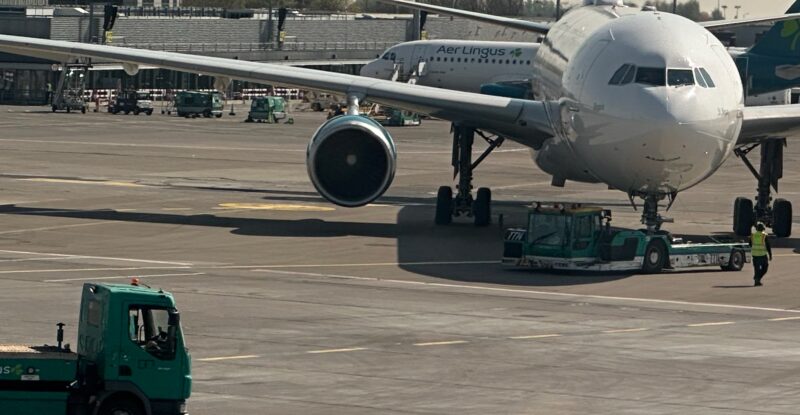Two years ago, NetForecast publicly rolled out its QMap Airport app, which continuously measures the performance of airport wireless networks to ensure that ground operations run smoothly. Now, as industry increasingly embraces a Future Travel Experience-spearheaded Smart Ramp vision — including one that will ultimately include autonomous aircraft turnarounds — NetForecast is busy measuring network performance at roughly 120 airports and collecting information from tens of thousands of employee digital devices.
The mountain of data gleaned from measuring the speed, effective bandwidth, network latency, DNS lookup time, packet loss, and RF signal strength and quality of airport cellular, private 5G and Wi-Fi networks has been quite revealing, with the Charlottesville, Virginia-based firm observing a lot of variability in network performance, including on a day-to-day basis. “There are definitely acute problems that occur in the network, which are a particular concern to operations,” NetForecast chief technologist Alan Jones tells Runway Girl Network.
That’s why, in a move that is not only new to NetForecast but believed to be new to the industry, the Charlottesville, Virginia-based firm has further enhanced QMap Airport to include the movement and behavior of individual devices. Carried by baggage handlers, tech ops, gate agents and even pilots, each device is armed with the QMap Airport app, delivering powerful insights.
In the past, NetForecast might have monitored the entire wing of a terminal or broken the airport down into grids and looked at the performance in those grids to isolate issues. Today it is using AI clustering algorithms, which analyze how things group together, to identify choke points and areas of the airport where devices are concentrated. It can both assess how movements affect individual events that occur in places like hangars, where metal structures could affect cellular reception, as well as the overall score of an airport’s network performance. And, because the QMap Airport solution is user- and application-centric, it can detect issues before they disrupt operations.
It won’t surprise you to learn that many common choke points are being observed, with Jones urging us to imagine a particular area, like a box around an aircraft, where there is a lot of onboarding and offboarding of goods and data occurring and where many individual devices are moving in and out of the area. “We can zoom in on that area as devices move in and out,” he explains, “which is a much greater interest than just an arbitrary grid. The operators are not interested if ‘Bill is taking lunch’ or anything like that. They’re more interested in whether somebody is under the wing of that plane and, when they push the button on that baggage handler scanner, does it work?”
NetForecast is also adding animations and other enhancements to its customer portal to allow customers to zoom in and see those kinds of behaviors. As a result, rapid troubleshooting can now be supported. “Our current threshold is under 10 minutes,” reveals Jones, noting that NetForecast is looking to try to shorten that timeframe further.
Our trend as a company is to definitely become more real time. That’s in our development plan.
Another consistent theme being observed by NetForecast is that certain telcos’ cellular networks perform far better than others. “There’s definitely networks that are faster but slightly less reliable, and other networks that are more reliable,” Jones says.
“We do find that, with a couple of the carriers, the performance of the network east of the Mississippi is vastly different. Maybe ‘vastly’ is a little bit of an exaggeration, but it is definitely a marked difference between the performance of the network east of the Mississippi and west of the Mississippi… And you know, working with our customers, they have adjusted the mix of carriers that they use in their devices to utilize that information, and it has improved the reliability of what they do on the ground.”
The data also show that, on a device specific level, most devices from the same era — say the last three years — are highly capable. Both Android and iOS “have their place for different reasons,” Jones says, and in general, there are very few device limitations out there, especially given that the device upgrade cycle at airlines is quite frequent, at three to four years typically. That said, given that newer devices can generally access a broader range of frequency bands, there are some unique situations where problems can be isolated on that basis.
A natural extension to NetForecast’s work is to also ultimately monitor connected autonomous vehicles with QMap Airport, Jones confirms. This work is extremely timely, as connectivity providers, including satellite operator and aero ISP SES, are now eyeing ‘comms on the move’ solutions for autonomous vehicles on the ramp.
“Things are changing rapidly,” Jones notes, and private 5G is being adopted. Given the “critical nature of connectivity to an autonomous device, which in most cases, if it’s lost, means the device just halts,” it is essential to address acute issues that occur at cellular carriers.
NetForecast recently attended the APEX Global EXPO in Long Beach, California and discussed its recent QMap Airport upgrades with airlines and airports. Company president and CEO Rebecca Wetzel confirms that the firm is now in early discussions with some of the autonomous vehicle vendors “who are indeed concerned that, should the network let them down, that fingers would be pointed at their equipment.
“We can help really trace where the problem is and keep them running and provide them with the data needed to fix problems that can interfere with airport operations.”
Related Articles:
- SES eyes land mobility comms opportunities on airport ramps
- NetForecast expands airport cellular monitoring to autonomous vehicles
- Why Seamless is introducing Viper to measure IFC performance
- NetForecast extends network monitoring to airport cellular
- JetBlue partners with Quvia to advance IFC and ensure consistent PaxEx












